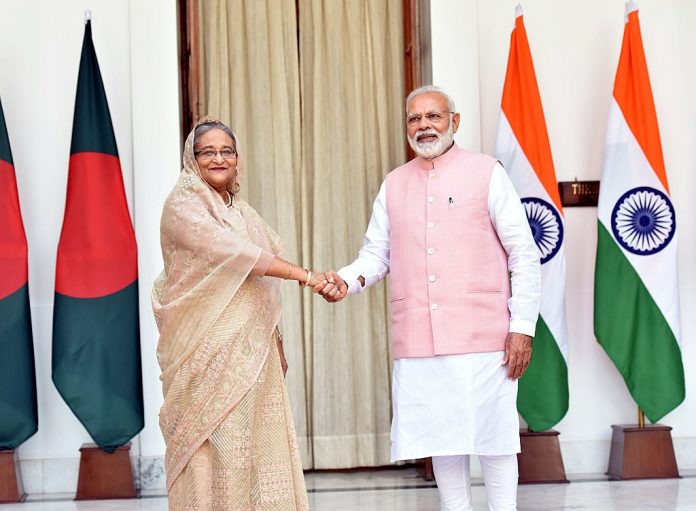The recent diplomatic and political issues between India and its two neighbors, Sri Lanka and Nepal have strained India’s capabilities of becoming an effective regional leader. To balance and offset its diplomatic losses in South Asia, New Delhi has begun fast-tracking connectivity agreements with its smaller neighbors, particularly, Bangladesh, Bhutan, and the Maldives. For India to maintain and enhance its leadership role in South Asia, it would have to prioritize relations with its smaller neighbors and increase levels of integration with them.
Recent Tensions with Nepal and Sri Lanka
India’s diplomatic row with Nepal started when New Delhi announced the inauguration of a Himalayan road link that passes through the area of Kalapani. The heart of the dispute revolves around the different cartographic interpretations regarding the headwaters of the Mahakali or Sharda river. Moreover, after months of engaging in cartographic wars, tensions between India and Nepal have further escalated towards the cultural realm as well.
On July 13, at the 206th birth anniversary celebration of Bhanubhakta Acharya, the revered poet who translated the Sanskrit epic Ramayana into Nepali, Nepali Prime Minister KP Sharma Oli made the stunning claim that the ancient text’s hero, all-important Hindu deity, Rama, “is Nepali, not Indian.” Oli said Nepal had been “culturally oppressed. Our historical facts were distorted. We thought Sita got married to Prince Ram of India. But this is not true. Sita was married to Ram of Ayodhya that is in Nepal. India created a fake Ayodhya.” This has stirred more animosity between the two states and their people.
India-Sri Lanka relations have also come under strain. Sri Lankan President Gotabaya Rajapaksa has recently announced that Colombo will review the port agreement signed between India and Sri Lanka worth millions of dollars. Experts see this move as an effort by Sri Lanka, a close partner of China, to distance itself from the Quad member states, particularly India. The Quad is a multilateral security arrangement between the United States, Japan, Australia, and India that aims to counter China’s growing assertive maneuvers in the Indo-Pacific.
Harin Fernando, a minister in the previous government led by Maithripala Sirisena and Prime Minister Ranil Wickremesinghe, accused the current administration of transforming Sri Lanka into a “banana republic” under Chinese rule. “In 2014, before we toppled the government, this is what we highlighted. But now we see [the Chinese] doing this much more strategically,” he said. Fernando expressed how China now has a monopoly on Sri Lanka’s development projects. He added that several dealings with China in the past lacked transparency and failed to follow due tender procedure, while the public was often kept in the dark.
A Way Forward for India: Enhanced Connectivity
India realizes that for it to play the role of a regional leader, it would have to gain the trust and enhance its relations with its neighbors. The current downturns with both Nepal and Sri Lanka have exposed certain loopholes in India’s role as a regional leader. To offset its diplomatic losses in South Asia, New Delhi has begun speeding-up connectivity projects particularly with Bhutan, Bangladesh, and the Maldives.
India and Bhutan have opened a new land trade route earlier this week to significantly boost commerce and connectivity. The trade route will link West Bengal’s Jaigaon with Ahllay, Pasakha in Bhutan. According to the Indian Envoy to Bhutan Ruchira Kamboj, “it will facilitate connectivity between our two countries in these COVID-19 times, further strengthening our special relationship.” In addition, a Land Customs station has been opened at Ahllay, Pasakha by the Indian government at the request of Bhutanese government as a part of the new land route.
India and Bangladesh have also taken a step further towards enhancing connectivity. In the same week, union shipping minister Mansukh Mandaviya virtually flagged off the first trial movement of container ships from Kolkata Port to Agartala in Tripura through the Chattogram (Chittagong) Port in Bangladesh. The new route will reduce time and logistics cost for cargo movement and connect north-east India to Bangladeshi ports. Speaking at the virtual flagging ceremony, Mansukh Mandaviya said, “it is a historic move to utilize Bangladeshi ports of Chattogram and Mongla Port for movement of India’s transit cargo” and it “will be a new chapter in India-Bangladesh maritime relations.”
India and the Maldives have also recently cemented connectivity through air. The Indian High Commission in Male announced that the project to expand the airport in H. Dh. Hanimaadhoo to accommodate larger international flights will be financed under the line of credit approved by India to the Maldives in 2019. The project will include an extension of the runway from 1200 to 2200 MTS and a new terminal building. The project will be a key cornerstone in India’s relations with the Maldives. In addition, the increasing levels of integration and connectivity will enhance inter-state coordination.
The recent diplomatic and political controversies between India and its two neighbors, Nepal and Sri Lanka have challenged the former’s position as a leader of the South Asian region. With limited levels of integration and cooperation, New Delhi will not be able to maximize its relations with its neighbors effectively. As a result, India has recently begun forging fast-paced connectivity projects with its neighbors, particularly, Bhutan, Bangladesh, and the Maldives to offset its diplomatic losses. To become an effective regional leader, India must continue to play a leading role in forging closer relations with its smaller neighbors.
The views and opinions expressed in this article are those of the author.

Don McLain Gill is a Lecturer at the Department of International Studies, De La Salle University (DLSU), Philippines.


